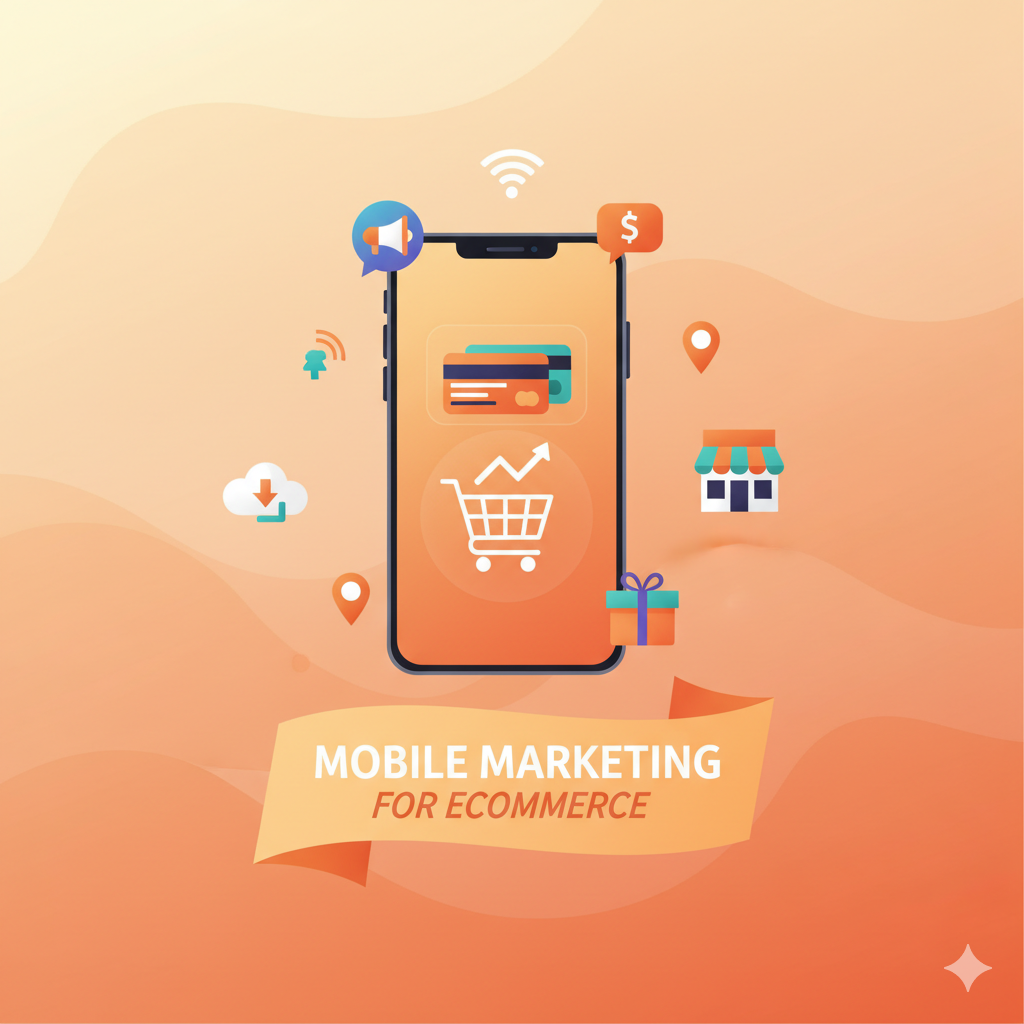If you run an online store, you already know that most of your visitors are coming from their phones. But here’s the thing simply having a mobile-friendly website isn’t enough anymore. You need a mobile marketing strategy that actually reaches, engages, and converts your audience right where they spend most of their time on their smartphones.
In this guide, I’ll break down everything about mobile marketing for eCommerce what it is, how it works, the types, best strategies, examples, and how you can start doing it effectively.
What Is Mobile Marketing for eCommerce?
Mobile marketing for eCommerce is the process of promoting your online store, products, and offers through mobile devices like smartphones and tablets using channels such as SMS, social media, mobile apps, push notifications, and mobile ads.
It’s not just about sending messages or running ads. It’s about creating a mobile-first shopping experience that makes it easy for customers to browse, shop, and buy directly from their phones.
Why Mobile Marketing Matters for eCommerce
Here are some quick facts:
- Over 70% of eCommerce traffic comes from mobile devices.
- Mobile users spend 4–5 hours a day on their phones.
- People are more likely to make impulse purchases when shopping on mobile.
So, if your marketing isn’t optimized for mobile, you’re missing out on a massive chunk of potential customers.
Mobile marketing helps you:
- Reach customers instantly.
- Personalize offers with data like location and behavior.
- Increase conversion rates with frictionless shopping experiences.
How Mobile Marketing Works
At its core, mobile marketing uses mobile-specific tools and data to reach users in real time. Here’s how it works in a simple flow:
- Attract: You target potential buyers using ads, SMS, or social platforms like Instagram or TikTok.
- Engage: Once they click or respond, you guide them through mobile-optimized content maybe a landing page, app, or chat.
- Convert: You make checkout fast and easy — one-click payments, autofill, mobile wallets, etc.
- Retain: You send personalized push notifications, messages, or offers to bring them back.
Think of it as a continuous cycle attract, engage, convert, and retain — all optimized for mobile behavior.
Types of Mobile Marketing for eCommerce
There isn’t just one kind of mobile marketing. Here are the main types you can explore:
1. SMS Marketing
Text messages still work like magic. You can send limited-time offers, order updates, or coupon codes directly to your customers’ phones.
Example: “50% off today only! Tap to shop: [link]”
2. Mobile App Marketing
If your eCommerce brand has an app, you can use push notifications, in-app messages, and personalized recommendations to drive repeat sales.
3. Mobile Advertising
These are paid ads that appear on mobile apps, games, or websites. You can run mobile-specific ad campaigns on platforms like Google Ads, Meta Ads, or TikTok Ads.
4. Social Media Marketing
Since platforms like Instagram, Snapchat, and TikTok are primarily mobile-first, running targeted ad campaigns or influencer collaborations here can be highly effective.
5. Mobile Email Marketing
Emails that are optimized for mobile screens — short subject lines, clear CTAs, and scannable content — perform much better than desktop-heavy designs.
6. Location-Based Marketing
You can send personalized offers to users based on where they are — for example, a discount when they’re near your store or in a certain city.
7. Mobile Wallet Marketing
Using platforms like Apple Wallet or Google Pay, brands can deliver digital coupons, loyalty cards, and event passes directly to users’ phones.
Best Mobile Marketing Strategies for eCommerce
Let’s go through the strategies that actually work in real life:
1. Create a Mobile-First Website
Make sure your store loads fast, looks good, and is easy to navigate on small screens. Optimize your checkout flow fewer clicks mean higher sales.
2. Use Personalized Push Notifications
Push notifications have insane engagement rates. But don’t spam personalize them based on behavior or abandoned carts.
3. Leverage SMS Automation
Set up SMS automations for order confirmations, shipping updates, cart recovery, and limited-time offers.
4. Run Mobile Ads With Retargeting
Use retargeting ads to bring back users who visited your store but didn’t purchase. Show them the exact product they viewed it works wonders.
5. Invest in Mobile App Loyalty Programs
Encourage users to install your app and reward them with exclusive deals or early access to sales.
6. Use Mobile-Friendly Content
Keep your copy short, visuals bold, and CTAs clear. Vertical videos and story-format ads perform best.
7. Test Mobile Payments
Offer payment options like Google Pay, Apple Pay, and UPI to make checkout frictionless.
Examples of Mobile Marketing in eCommerce
Here are a few brands doing mobile marketing right:
- Amazon: Personalized push notifications and one-tap purchasing make buying super easy.
- Nike: Uses its app for exclusive product drops and location-based notifications.
- Zomato: Sends witty, hyper-personalized push notifications to drive repeat orders.
- Sephora: Combines mobile loyalty programs, AR try-on features, and SMS offers to engage users.
Best Mobile Marketing Platforms for eCommerce
If you’re ready to get started, here are some great tools to explore:
- Klaviyo – for mobile email and SMS automation
- Attentive – for advanced SMS marketing
- MoEngage – for push notifications and user engagement
- Google Ads / Meta Ads – for mobile ad campaigns
- Tapcart – for building a mobile eCommerce app
- Airship – for mobile personalization and analytics
How to Do Mobile Marketing for Your eCommerce Store
Here’s a simple step-by-step approach:
- Know Your Audience: Study your mobile visitors what devices they use, where they come from, and how they shop.
- Optimize Your Site for Mobile: Compress images, use responsive layouts, and test checkout on different devices.
- Pick Your Channels: Decide whether you’ll focus on SMS, push notifications, or ads.
- Create Engaging Mobile Content: Use short text, strong visuals, and clear CTAs.
- Automate Campaigns: Set up triggers — abandoned cart SMS, re-engagement push, post-purchase emails, etc.
- Track and Analyze: Monitor click rates, conversion rates, and retention to see what’s working.
- Keep Testing: Mobile trends change fast. Keep A/B testing your messages, designs, and timing.
Key Takeaways
- Mobile marketing is the heart of modern eCommerce.
- It’s not about being everywhere — it’s about being smart and contextual.
- Combine SMS, push notifications, and mobile ads for the best results.
- Personalization and convenience are your biggest weapons.
- Always optimize for user experience — fast loading, easy checkout, simple design.
Conclusion
The future of eCommerce is mobile there’s no denying that. With people spending most of their time on their phones, mobile marketing gives you the power to connect with them instantly and personally.
Start small maybe with SMS or push notifications and then scale to mobile ads or your own app. As long as you focus on making shopping simple and personal, your mobile marketing efforts will pay off big time.



Pingback: What Is Order Duplication in E-commerce? - Pratsify
Pingback: Is Headless Shopify Better for SEO? - Pratsify
Pingback: How to Delete a Shopify Store (Step-by-Step Guide) - Pratsify